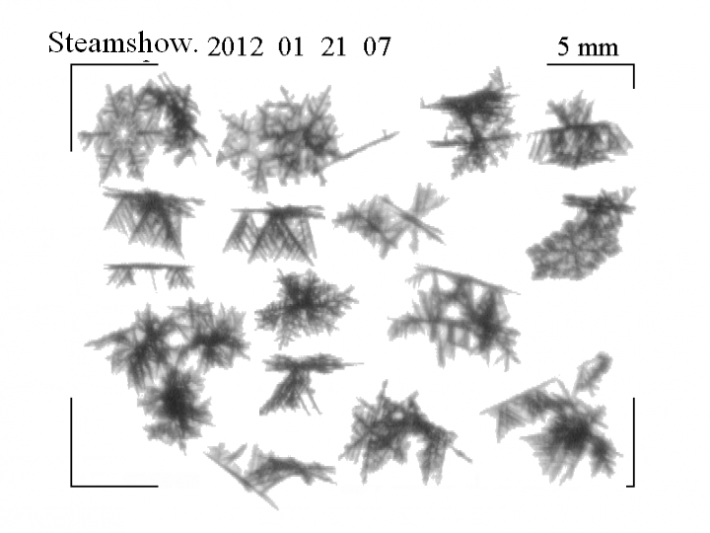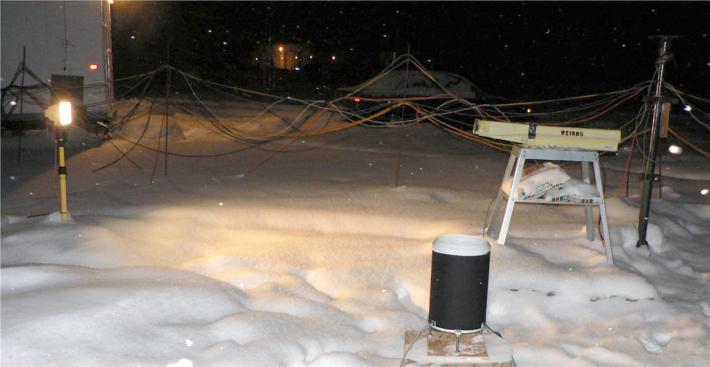Snowflakes!
This image of falling snowflakes was taken by the Snow Video Imager (SVI) at one of the auxiliary ground sites, the Steamshow Fairgrounds, 5 miles (8km) south of the main CARE site, during a light snowfall on Saturday, January 21. The SVI is set up about two feet off the ground and the snowflakes are falling from top to bottom through the frame. They can be seen here in different three-dimensional orientations at 5x magnification.
In the top left corner and the center right, you can see two examples of classic six-sided dendrite snowflakes. The other flakes with crystals growing up and down out of the flat plates (seen as lines in profile here) are also common, though not quite as pretty.
I spoke with Larry Bliven at NASA's Wallops Flight Facility in Virginia who designed the SVI. He says the conditions for this snow fall were just right up in the clouds and very calm as they fell for the flakes to look this good. "In general, images of snowflakes are ugly because they get torn apart by wind," says Bliven.
Unlike other snowflake sensors used to determine size and shape, the SVI captures grayscale images so scientists can see the actual snowflakes. The contrast apparent in grayscale allows them to more accurately classify shapes and determine sizes, with the goal of relating them to measurements from radar and radiometers, improving water content estimates, and tracking the natural variability of the flakes.
The SVI is essentially a digital video recorder that takes pictures at 60 frames a second -- comparable to a standard camcorder. It then sends an analog signal to a PC which converts it into digital imagery. "What's different about the SVI is I do a compression of the data that allows it to operate 24/7 all winter," says Bliven.
The SVI has been used for about 5 years now, and was set up to look at both rain and snow in two previous ground validation campaigns GPM participated in, the Canadian CloudSat/CALIPSO Validation Programme (C3VP) during the winter of 2006-07 and the Light Precipitation Evaluation Experiment (LPVEx) that took place in Finland in the fall of 2010.
It was also set up on top of Mt. Whistler during the 2010 Vancouver Winter Games to support monitoring of weather conditions. "We got Olympic snowflakes," says Bliven. The SVI in fact recorded 11 million of them.
Four SVIs are currently at the ground sites in Canada for GCPEx. Two are at the main field site at CARE, and one each are at the auxiliary sites in Huronia and the Steamshow Fairgrounds.



